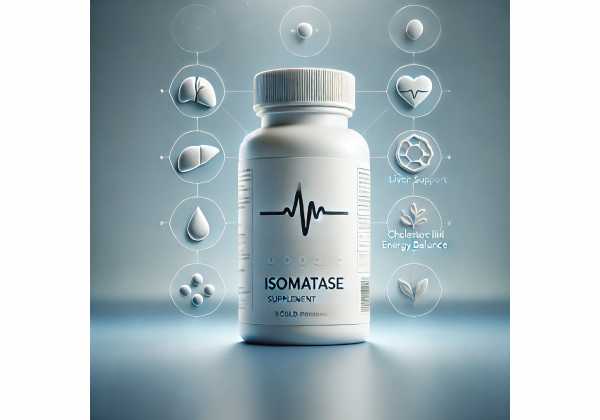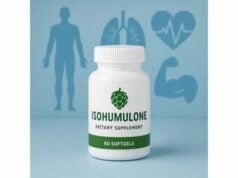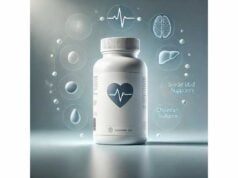
Isomaltase is a digestive enzyme anchored on the brush border of your small intestine. Together with its partner sucrase, it forms the sucrase–isomaltase complex that breaks alpha-1,6 linkages in starch fragments (isomaltose, limit dextrins) so glucose can be absorbed for energy. Interest in isomaltase has grown because partial deficiencies may masquerade as “IBS,” and because enzyme therapy and dietary strategies can improve symptoms in select people. This guide explains what isomaltase does, who might benefit from targeted approaches, and where risks lie. You will find plain-language explanations, practical use cases, and clear safety steps. While some consumer enzyme blends mention “alpha-glucosidase” activity, there is currently no approved isomaltase-only therapy; medical care focuses on diagnosis and individualized diet, and—for genetic sucrase deficiency—sucrase replacement. Read on to learn how isomaltase fits into carbohydrate digestion and how to navigate testing, diet, and clinical options.
Essential Insights
- Helps digest alpha-1,6 bonds in starch fragments, reducing post-meal gas and bloating.
- May ease symptoms in people with low brush-border disaccharidase activity when paired with diet changes.
- Typical supplemental range is not established; clinical enzyme therapy targets sucrase, not isomaltase (dose per meal).
- Avoid self-treating if you have unexplained weight loss, chronic diarrhea, anemia, or pediatric growth concerns—seek evaluation.
Table of Contents
- What is isomaltase and how it works
- Benefits people ask about
- How to use diet and enzymes wisely
- Dosage realities and practical dosing
- Side effects, risks, and who should avoid
- Testing, diagnosis, and when to seek care
- Evidence summary and research frontiers
What is isomaltase and how it works
Isomaltase is one half of a dual enzyme, sucrase–isomaltase (SI), embedded in the microvilli (the “brush border”) of the small intestine. Each half has a distinct job. The sucrase domain splits sucrose into glucose and fructose and helps process some alpha-1,4 starch fragments; the isomaltase domain preferentially cleaves alpha-1,6 bonds, the branch points that appear when starch is partially digested by amylase. Those branch points show up as isomaltose and “limit dextrins.” If isomaltase activity is low, these fragments aren’t fully broken down, travel into the colon, and are fermented by bacteria—producing gas, bloating, and osmotic diarrhea.
A few features help you picture isomaltase’s role:
- Location: Isomaltase is tethered to the outer surface of enterocytes, perfectly positioned to finish carbohydrate digestion just before absorption.
- Specificity: It targets alpha-1,6 linkages best, but can act (more slowly) on some alpha-1,4 bonds when substrate concentrations are high.
- Partnership: SI coexists with maltase-glucoamylase (MGAM), another brush-border alpha-glucosidase. MGAM can partly backstop SI, which explains why symptoms vary widely among people with similar laboratory deficiencies.
- Regulation and injury: Viral gastroenteritis, celiac disease, Crohn’s disease, small intestinal bacterial overgrowth, and chemotherapy can reduce brush-border disaccharidases—including isomaltase—sometimes temporarily. Genetics can also impair SI folding, trafficking, or function, leading to congenital sucrase–isomaltase deficiency (CSID).
Because sucrase and isomaltase are encoded as a single protein, genetic variants often affect both domains. Yet residual activity may be uneven: some people have very low sucrase with partially preserved isomaltase, altering what foods cause symptoms. This asymmetry explains why one person may tolerate rice or potatoes but reacts strongly to table sugar, while another struggles with branched starches.
Clinically, the consequences of low isomaltase cluster around post-meal symptoms with carbohydrate-rich foods: cramping, bloating, excessive gas, and loose stools. In infants and young children with severe congenital deficiency, chronic diarrhea and failure to thrive may appear soon after sugary and starchy foods are introduced. In adults, milder variants may be misattributed to “IBS,” especially when symptoms resist common diets (such as low-FODMAP) or recur predictably after high-starch meals.
Understanding these mechanics sets the stage for smart, stepwise management: clarify whether a true enzyme deficiency exists, scale starch and sucrose loads to personal tolerance, and consider targeted enzyme therapy where it is proven to help.
Benefits people ask about
People rarely shop for “isomaltase” as a standalone supplement. Instead, they look for relief from carbohydrate-related symptoms—gas, bloating, urgency—after meals rich in branched starches (think crusty breads, cereals, granola bars) or sweets. Here are the realistic, evidence-aligned benefits you might expect when isomaltase function is supported—either by diagnosing and managing a deficiency or by adjusting diet thoughtfully.
1) Less post-prandial gas and bloating after starch-heavy meals.
If your brush-border enzymes are low, partially digested starch fragments arrive in the colon, where bacteria ferment them into gas and short-chain fatty acids. Reducing the load of alpha-1,6–branched carbohydrates (or spacing them through the day) often translates to fewer symptoms. Some people also find that cooked-and-cooled starches (which are richer in resistant starch) are more troublesome than freshly cooked forms; simple recipe adjustments can reduce symptom peaks.
2) Better tolerance of varied carbohydrate sources with personalized limits.
Many carbohydrate intolerance plans focus on sucrose restriction alone. That helps when sucrase is the main issue. But people with lower isomaltase may feel best when they:
- Choose simpler starches with fewer branch points (e.g., jasmine rice over sticky glutinous rice; thin pasta over al dente whole-wheat pasta).
- Reduce portion sizes of highly processed, expanded cereals and crackers, which pack a large surface area for rapid delivery of starch fragments to the small intestine.
- Pair starch with protein and fat to slow gastric emptying and soften glycemic and osmotic spikes.
3) Symptom control in acquired (secondary) disaccharidase deficiencies.
When brush-border enzymes are low because of mucosal injury (e.g., after viral gastroenteritis, celiac flare, or small intestinal inflammation), short-term carbohydrate adjustments can ease symptoms while the lining heals. In these cases, improvements may occur over weeks to months as villi recover and enzyme expression normalizes.
4) Clarifying “mystery IBS.”
A subset of adults labeled with IBS-D or IBS-M actually have low disaccharidase activity on biopsy or abnormal sucrose breath tests. Recognizing this pattern can lead to targeted strategies that succeed where generalized diets and antispasmodics have failed.
What about enzyme supplements?
Over-the-counter blends often list “alpha-glucosidase” from fungal or plant sources. These may provide broad activity against alpha-1,4 bonds and, to varying degrees, alpha-1,6 bonds. However, the amount of active enzyme, pH stability in the stomach, and precise activity against limit dextrins differ widely across products and are rarely standardized to clinical endpoints. There is no FDA-approved isomaltase-only therapy. Approved enzyme therapy targets sucrase (sacrosidase) for CSID; dietary management remains central for alpha-1,6 intolerance features.
The bottom line: meaningful benefits stem from a clear diagnosis, strategic carbohydrate dosing, and—in selected genetic cases—prescription enzyme replacement for the sucrase component. Consumer enzyme blends may help some individuals, but responses are inconsistent and should be viewed as adjuncts to, not replacements for, proper evaluation and diet planning.
How to use diet and enzymes wisely
A practical plan respects two realities: (1) isomaltase targets alpha-1,6 branch points in starch fragments; and (2) your tolerance reflects the combined activity of sucrase–isomaltase and maltase-glucoamylase. Start with observation, then personalize.
Step 1: Keep a simple meal–symptom log for 7–10 days.
Note what you ate, how it was prepared, and when symptoms appeared. Pay attention to:
- Portion size of starch-dense foods (breads, cereals, crackers, pasta, rice, potatoes).
- Preparation method (freshly cooked vs. cooked-and-cooled, al dente vs. soft).
- Co-ingestion with sucrose-rich items (desserts, sweetened drinks), which may add sucrase load.
- Timing (symptoms typically peak 30–120 minutes after eating when small-intestinal digestion and absorption occur).
Step 2: Adjust starch quality and quantity instead of “cutting all carbs.”
Try these swaps:
- Choose simple starches with fewer branch points: white rice, plain potatoes, quick-cooking oats.
- Limit highly branched, processed cereals and crackers; reduce granola bars with added syrups that load both sucrase and isomaltase pathways.
- Serve smaller portions more often (half-portions across meals) to spread the enzymatic workload.
Step 3: Pair carbohydrates with protein and fat.
Mixed meals slow gastric emptying and modulate delivery to the small intestine, easing osmotic shifts that trigger urgency and bloating.
Step 4: Consider a time-limited trial of an alpha-glucosidase–containing enzyme blend.
If you try an OTC blend, look for a clear label with per-capsule activity units and pH tolerance. Use with the first bites of the meal. Evaluate over 2–3 weeks against your meal–symptom log. Accept that evidence is limited and responses vary. Discontinue if you see no benefit.
Step 5: For confirmed congenital sucrase–isomaltase deficiency.
Dietary sucrose restriction is essential. Prescription sacrosidase can replace sucrase activity. Remember: sacrosidase does not supply isomaltase. Many people still need portion and preparation strategies for starches. A registered dietitian with experience in disaccharidase deficiency can align your carbohydrate plan with your energy needs, growth goals (children), and sports or work demands.
Step 6: Support villus recovery in acquired deficiencies.
Treat the underlying cause (e.g., strict gluten-free diet for celiac disease). During healing, favor gentler starches and smaller portions. Reassess tolerance periodically; many people can liberalize their diet as enzyme expression returns.
Hydration, fiber, and microbiome considerations.
If stools are loose, prioritize fluids and electrolytes. Choose soluble fiber sources (ripe bananas, oats) over excessive insoluble fiber, which can speed transit. A general probiotic may support symptom control in some individuals, but it does not replace missing disaccharidases.
Used together—careful observation, targeted swaps, and, when indicated, enzyme therapy—these steps help many people reclaim varied, comfortable eating without unnecessary restrictions.
Dosage realities and practical dosing
There is no established “isomaltase supplement dose.” Isomaltase is not available as an approved, purified oral therapy. Clinical enzyme replacement for CSID uses sacrosidase (sucrase), prescribed and titrated per meal or snack to replace the missing sucrase activity. Because isomaltase and sucrase are partners on a single protein, improving sucrose digestion can substantially reduce symptoms for many—but not all—patients. People who remain sensitive to highly branched starches may still need dietary adjustments.
How prescription sucrase is dosed (context for caregivers and patients):
- Administered with every meal and snack.
- Mixed in cold or room-temperature liquids (not fruit juice; heat inactivates enzyme).
- Pediatric dosing differs by weight; adults typically use a fixed per-meal volume based on the product label and clinician guidance.
- Anaphylaxis is rare but documented; the first doses are given under medical supervision in some cases (especially in young children or those with significant allergies).
What about OTC “carb-digesting” enzymes?
Labels often list a mix (amylase, glucoamylase, invertase, lactase) with claimed “alpha-glucosidase” activity. Unfortunately, units are inconsistent across brands, and measured activity against alpha-1,6 bonds may be modest. If you trial a product:
- Take with the first bite.
- Use a consistent amount per meal for 2–3 weeks while tracking symptoms.
- Combine with portion control and meal composition strategies for best odds of benefit.
- Stop if no clear improvement.
Dietary dosing matters as much as enzyme dosing. Think of starches as “enzyme workloads.” A large, branched-starch load (e.g., a big bowl of crunchy muesli with dried fruit) may exceed your capacity even if total grams of carbohydrate are similar to a simple meal (e.g., white rice with chicken and vegetables). Spreading these loads across meals is, in practice, a form of “dosing” your isomaltase.
Special situations: athletes and active people.
Rapid carbohydrate fueling (gels, chewy blocks) can trigger symptoms in those with borderline disaccharidase activity. Strategies include mixing glucose-forward products with lower-fructose options, using smaller, more frequent feeds, and practicing “gut training” during workouts to enhance tolerance gradually.
Bottom line: Because isomaltase therapy itself isn’t commercially available, your “dose” is a combination of (a) sucrase replacement when indicated, (b) the type and amount of starch you eat at one time, and (c) how you prepare meals. Work with a clinician for prescription therapy decisions and with a dietitian for individualized carbohydrate planning.
Side effects, risks, and who should avoid
Diet changes and OTC enzymes are generally low-risk, but there are important caveats.
Potential side effects and pitfalls
- Worsening diarrhea or constipation if you swing too far—either over-restricting carbohydrates (leading to inadequate fiber and energy) or over-relying on enzyme blends without adjusting portions.
- Allergic reactions to enzyme products (rare), particularly those derived from fungi or yeast; stop immediately and seek care if you develop hives, wheeze, or swelling.
- Misdiagnosis risk: Self-treating chronic diarrhea and weight loss as “carb intolerance” can delay detection of celiac disease, inflammatory bowel disease, pancreatic insufficiency, bile acid diarrhea, thyroid disease, or infections.
Who should seek clinician guidance before trying OTC enzymes or major diet changes
- Infants and children with poor growth, persistent diarrhea, or feeding difficulties.
- Adults with red flags: blood in stool, nocturnal symptoms, fever, iron-deficiency anemia, unexplained weight loss, or family history of colorectal cancer/inflammatory bowel disease.
- People with diabetes (enzyme-aided carbohydrate digestion can change post-meal glucose patterns).
- Individuals with complex food allergies or asthma, given rare but real hypersensitivity reactions to enzyme solutions.
- Pregnant or breastfeeding individuals: formal studies are limited; focus on balanced diet and clinician-supervised strategies.
Medication interactions and special scenarios
- Enzyme blends are not known to interact with most medicines, but separating them from acid-suppressing drugs (which alter gastric pH) may preserve activity.
- For those on a strict gluten-free diet for celiac disease, persistent symptoms may reflect ongoing gluten exposure or a coexisting disaccharidase deficiency; changing carbs without checking celiac control can be misleading.
- After gastroenteritis, temporary brush-border enzyme reductions are common. A gentle carbohydrate plan for a few weeks is usually sufficient; enzyme pills are optional and may not be necessary.
Safety with prescription sacrosidase (sucrase replacement)
- First doses may be supervised.
- Mix only with cold/room-temperature water, milk, or formula (heat and fruit acids can inactivate enzymes).
- People with known yeast allergies should discuss risks and benefits carefully with their clinicians.
Protecting your long-term health means balancing symptom relief with sound medical evaluation. When in doubt, rule out other causes of malabsorption before attributing symptoms to low isomaltase activity.
Testing, diagnosis, and when to seek care
Because symptoms overlap with many GI conditions, testing clarifies whether disaccharidase deficiency—and specifically sucrase–isomaltase dysfunction—is part of your picture.
1) Symptom pattern recognition
Features that raise suspicion include: symptoms beginning in childhood; predictable flares after sugary or starch-dense meals; poor response to standard IBS diets (low-FODMAP) but better days when simple starches are emphasized; and family history of carbohydrate intolerance.
2) Noninvasive tests
- Breath hydrogen tests after a sucrose challenge can indicate malabsorption when hydrogen (or methane) rises. A well-run test standardizes the dose, fasting state, and sampling intervals to improve accuracy.
- Stool testing is not diagnostic for disaccharidase deficiency and should not be used in isolation.
- Genetic testing (panels for SI variants) can support a diagnosis of congenital sucrase–isomaltase deficiency (CSID). Presence of pathogenic variants strengthens the case, but absence does not rule out acquired, secondary deficiencies.
3) Gold-standard testing
- Duodenal disaccharidase assay via upper endoscopy with small-bowel biopsies measures activity of lactase, sucrase, isomaltase, and maltase directly from mucosal samples. Low activities confirm the diagnosis and quantify severity across enzymes. This test is invasive and usually reserved for cases with persistent, burdensome symptoms or diagnostic uncertainty.
4) Structured dietary trials
Before invasive testing, some clinicians recommend a guided sucrose- and starch-reduction trial for 2–4 weeks, ideally with dietitian oversight, to gauge symptom response. Objective tracking (stool frequency, consistency, pain scores) increases interpretability. For children and underweight adults, dietary trials should be closely supervised to avoid inadequate energy intake.
5) Therapeutic trials
In confirmed CSID, a trial of sacrosidase alongside sucrose restriction often yields rapid symptom improvement when sucrase deficiency drives symptoms. Persistence of symptoms with branched starches suggests that managing alpha-1,6 loads (portioning, food choices) remains important, since sacrosidase does not replace isomaltase.
6) When to seek specialist care
- Ongoing symptoms despite conscientious diet adjustments.
- Growth concerns in children or nutrient deficiencies in any age group.
- Coexisting conditions (celiac disease, inflammatory bowel disease, pancreatic insufficiency) that complicate the picture.
- Need for biopsy-based testing or prescription therapy.
A clear diagnosis empowers precise, sustainable management—avoiding both over-restriction and under-treatment.
Evidence summary and research frontiers
What is well-established?
- The sucrase–isomaltase complex is the dominant intestinal disaccharidase, essential for final-step digestion of sucrose and many starch fragments.
- Genetic variants in SI can reduce enzyme trafficking to the brush border, alter folding, or change catalytic function, producing CSID with a spectrum from severe infantile diarrhea to adult-onset symptoms resembling IBS.
- Secondary (acquired) reductions in disaccharidase activity occur in mucosal injury—from gastroenteritis to celiac disease—and can mimic or augment primary deficiencies.
- Sacrosidase (sucrase replacement) improves sucrose digestion and symptoms in CSID, but it does not provide isomaltase activity; dietary management of starch remains important for many.
What is emerging?
- Adult cohorts studied in motility and neurogastroenterology clinics show surprisingly high rates of low disaccharidase activity, raising the possibility that a subset of “IBS-D” may reflect enzyme deficits.
- Genotype–phenotype correlations are refining how specific SI variants map to clinical patterns (e.g., preserved isomaltase but absent sucrase vs. global reduction). This may guide individualized diet and expectations for response to sucrase therapy.
- Optimized sucrose breath testing protocols and home challenge-symptom tools are being refined to improve accessibility and reduce the need for invasive biopsies in straightforward cases.
- Research is exploring whether co-expression with maltase-glucoamylase can compensate sufficiently in some individuals and how gut inflammation, microbiome shifts, and diet interact with disaccharidase expression.
What remains uncertain?
- The clinical utility of OTC alpha-glucosidase blends for alpha-1,6–rich meals lacks robust randomized trials. Individual responses likely depend on product stability in gastric acid and actual activity against limit dextrins.
- Whether future biologics or engineered enzymes can replace isomaltase activity orally remains an open question, with challenges including acid stability, delivery to the brush border, and regulatory pathways.
Practical takeaways for today
- Start with pattern recognition and simple dietary dosing strategies; escalate to testing when symptoms are significant or persistent.
- In confirmed CSID, combine sucrose restriction with sucrase replacement; continue to manage branched-starch loads if needed.
- Keep an eye on evolving diagnostics and therapies—particularly in adults with “IBS” features unresponsive to standard care—while avoiding over-promising consumer enzyme solutions.
With careful diagnosis and measured, patient-specific strategies, many people achieve excellent symptom control and a comfortable, varied diet—without unnecessary restrictions.
References
- Genetic and acquired sucrase-isomaltase deficiency 2024 (Review)
- The multiple roles of sucrase-isomaltase in the intestinal physiology and pathophysiology 2016 (Review)
- Genetic Loss of Sucrase-Isomaltase Function: Mechanisms, Diagnoses, and Implications 2023 (Review)
- Sucrase-Isomaltase Deficiency Causing Persistent Bloating and Diarrhea in an Adult Female 2021 (Case Report and Review)
- Sucraid® (sacrosidase) Oral Solution 2024 (Label)
Disclaimer
This article is for general education and is not a substitute for personalized medical advice, diagnosis, or treatment. Do not start, stop, or change any medication or therapeutic plan based on this content. If you have ongoing gastrointestinal symptoms, red-flag signs (weight loss, blood in stool, nighttime symptoms), or concerns about a child’s growth, seek care from a qualified healthcare professional. Share this guide with your clinician or dietitian to discuss how it applies to your situation.
If you found this helpful, please consider sharing it on Facebook, X (formerly Twitter), or your favorite platform, and follow us for future evidence-based guides. Your support helps us continue creating high-quality, trustworthy content.










